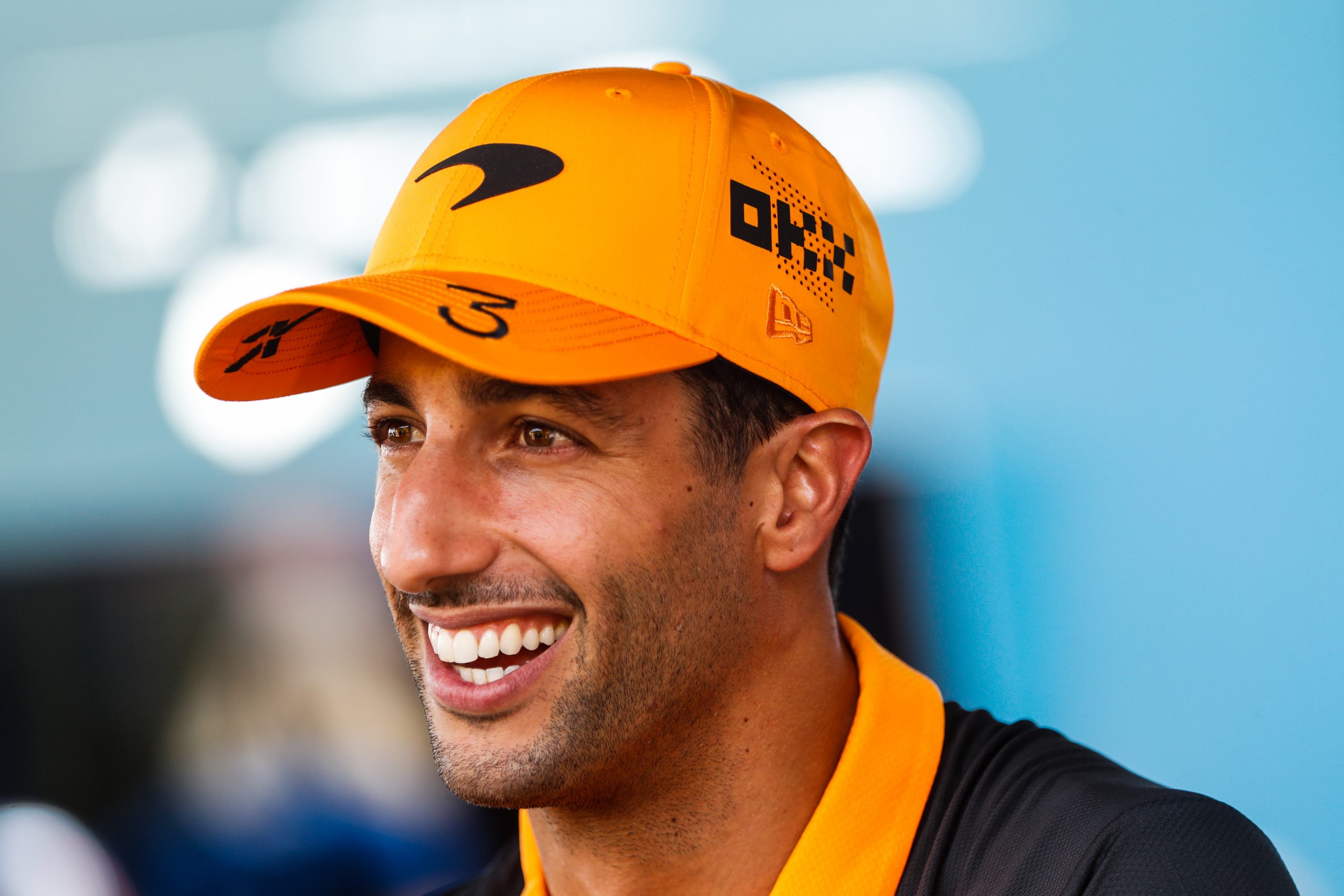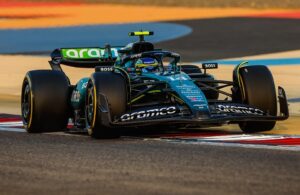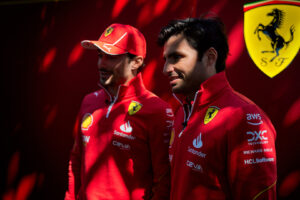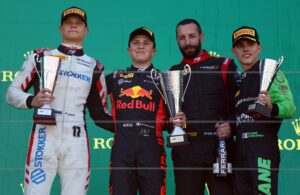Some transfers in F1 have been very unfortunate for a driver’s career. In the first part of the series, we look at Daniel Ricciardo.
From Red Bull’s number-one to rejoining in 2023 as a third driver. Daniel Ricciardo’s transfers have been highly debated. Relive some of the Aussie’s highs and lows in part 1 of this series.
Who is Daniel Ricciardo?
Ricciardo made his Formula 1 debut in 2011 with HRT. In 2012, he raced for Toro Rosso (now AlphaTauri), the junior team of Red Bull. Following Mark Webber’s departure from Red Bull at the end of 2013, Riccardo was given his seat and partnered alongside Sebastian Vettel.
Red Bull
The 2014 Season
For a while, Ricciardo was considered to be one of the best drivers on the grid. Now in a top team, he was able to show spectators and his rivals what he was really capable of. For the first qualifying session of the 2014 season in Melbourne, Ricciardo qualified on the front row and would go on to secure a P2 finish in the race. Meanwhile, his four-time World Champion teammate could only manage to qualify thirteenth and would have to retire the car during the race.
In the 7th race of the season, the Canadian Grand Prix, Ricciardo secured his first win in Formula 1. Due to reliability issues at the start of the race for both of the Mercedes drivers, Nico Rosberg and Lewis Hamilton, Ricciardo was able to overtake them and eventually win the race.
It wasn’t the 4x world champion Vettel who brought three race wins home that season, it was Red Bull’s new addition to the team. The Australian ended the season with 238 points in the standings, finishing third in the championship. Vettel finished the season in fifth after scoring 167 points.
The 2015 Season
2015 seemed a bit more challenging for the Aussie. On- and off-track issues led to a lack of performance. Ricciardo was still good, but if you compare it to his first year with Red Bull Racing, he wasn’t as consistent. He couldn‘t match his success in the 2014 season and dropped from third to eighth in the championship standings, three points behind his new teammate Daniil Kyvat. Although Ricciardo wasn’t able to take any wins, he was able to score two podiums.
2016: a new golden boy for Red Bull
When Max Verstappen joined the team in 2017, Ricciardo’s talent began to be outshone by his teammate. The team had found their new golden boy, in whom they saw a future World Champion. After winning on his debut in the Spanish Grand Prix 2016, the young Dutchman was considered to be the future of F1. Despite the rise of young Verstappen, the 2016 season might be Ricciardo’s best season in his F1 career.
The 2016 Monaco tragedy
This might be one of the most frustrating F1 moments for Ricciardo. He came first in all three Qualifying sessions and led the race early on. On lap 32 the team made a questionable pit-stop call to set Ricciardo up with a new set of slick tires. The tires weren’t ready when Ricciardo came into the pits, forcing him to lose precious seconds in the pit lane. This resulted in Ricciardo coming out of the pits after Hamilton, who took the win in the end. Ricciardo recalls Monaco 2016 as “a dark day”.
His redemption day finally came at the Malaysian Grand Prix. Ricciardo was able to take advantage of Lewis Hamilton’s engine failure, which forced the Brit to retire, and took the lead on Lap 41. After some tense battles at the Sepang International Circuit, Ricciardo managed to hold off Verstappen and decide the race for himself.
Similar to the 2014 season, Ricciardo finished 3rd in the championship standings, behind both of the Mercedes drivers. His teammate, also a parallel to the 2014 season, finished 5th in the standings. 52 points between them.
The 2017 Season
Red Bull went into 2017 as the third-best team on the grid, behind Mercedes and Ferrari. Throughout the season there were moments where Ricciardo’s performance was slightly behind Verstappen’s. But Redbull’s reliability issues over the season, especially towards the end of the year, made it difficult for both drivers to win.
Nevertheless, Ricciardo showed despite the problems in 2017, Red Bull was capable of competing at the top of the grid. He managed to be on the podium 9 times, 1 time as a winner, 1 time in second place, and 7 times in third place. Despite the highs, there were lows with Ricciardo not finishing in the points on six occasions – all of them due to DNFs. Ricciardo ended the season fifth in the standings.
The 2018 Season
At the beginning of 2018, Ricciardo seemed to be on a winning streak. After winning two of the first 6 races, he went into the season with a glorious start. However, his lucky streak didn’t continue throughout the season.
2018 Baku
In 2018 the tension between Max Verstappen and Daniel Ricciardo began to rise. Their relationship reached its boiling point in Baku, Azerbaijan.
In the early stages of the race, it already came to multiple on-track battles. Ricciardo tried to overtake Verstappen, who defended his position with a double move, which eventually led to both crashing into each other. Neither of the two was willing to take the blame.
“I felt like I was not really in the wrong even though I was the one that hit him. I think most people saw the double move.”
Ricciardo crashes verstappen| Baku 2018!#F1 #AzerbaijanGP pic.twitter.com/mNVSS99itg
— moad_95 (@moooad001) May 31, 2021
This crash was a decisive moment, that contributed to Ricciardo’s decision to leave Red Bull and move to Renault for the 2019 season. There is speculation that Ricciardo couldn’t stand to race under the pressure of Verstappen.
Ricciardo lived through some up-and-downs during his time with Red Bull. Overall, he was able to prove his outstanding driving abilities with 7 wins.
Renault
The transfer from Red Bull to Renault was a very controversial one at the time, considering Renault was not as competitive as Red Bull. It seemed like a step backward in Ricciardo’s career.
The 2019 Season
If you look at Ricciardo’s previous Formula 1 career, this story plays out quite differently than he’s used to. Racing in a midfield team vs racing at the top, and competing for the championship are two different things.
Ricciardo had a difficult start into the season, with a DNF in the first race in Australia. Nevertheless, he still had his moments like in the Japanese Grand Prix, where he impressively moved up from 16th to 8th place.
Despite it being a rather poor season for Ricciardo, he still managed to beat and outqualify his teammate Niko Hülkenberg 13 to 8. In the races, it was 11 to 6 in Ricciardo’s favor. Statistics have also shown that he was in fact the third-best midfield driver in Qualifying sessions right behind Sainz and Norris.
At the end of the season, Ricciardo could only claim P9 in the driver standings after finishing outside the points in 12 of 17 races, with not a single podium.
The 2020 Season
It was a bit of a rocky start for Ricciardo going into 2020, finishing out of the points in three races out of the first six. Despite that, Ricciardo managed to compete in the top half of the grid, scoring points in 14 out of 17 races. As a whole, Renault showed significant improvements compared to last season.
Daniel achieved his top results in Eifel Grand Prix and the Emilia-Romagna Grand Prix, where he finished third both times. A huge step forward for Ricciardo.
The team itself and especially Ricciardo had their moments in 2020, but in the end, Renault didn’t land where they wanted to. After being in an intense battle 3rd in the Constructors for the majority of the season, Renault fell back to 5th at end of the season.
Ricciardo eventually came to the decision to leave Renault and move on to a 3-year contract with McLaren. He felt that McLaren was in a better position than Renault, which led him to sign the contract. Cyril Abiteboul, former Team Principal of Renault, said
“It blew me away to hear him announce his departure because this winter, I felt the car had potential. The pandemic stopped everything, but I blame myself for not having been able to show Daniel what was the true potential of our project.”
McLaren – a transfer that didn’t go as expected
The 2021 Season
Monza Grand Prix 2021
Riccardo did secure a win at the Monza Grand Prix in 2021, McLaren’s only win in almost a decade. After championship rivals Verstappen and Lewis Hamilton took themselves both out of the race due to a crash, it was Ricciardo’s time to shine. He saw the opportunity, took it, and won.
“[…] And for anyone who thought I left, I never left. Just moved aside for a while.”
winner of monza 2021, daniel ricciardo!! pic.twitter.com/SGwGhk37Ck
— rayssa (@rzhamiIton) September 12, 2021
However, the rest of the 2021 season was a bit disappointing for Ricciardo. Same as in his seasons with Renault, he had his moments, but overall it wasn’t enough. In addition, he felt under pressure from Lando Norris, who outperformed him on a regular basis.
In the end, the car wasn’t matching up with Riccardo’s driving style. While his teammate Norris had a great season overall, finishing on the podium four times, Riccardo would only score one.
The 2022 Season
Things didn’t get easier for Ricciardo in his second year with McLaren. In fact, the situation around him looked rather bad.
The turning point in the 2022 season, Riccardo’s lack of performance resulted in McLaren ending their contract with him and replacing him with 2021 Formula 2 champion Oscar Piastri for the 2023 season. Riccardo confirmed the speculations about him not driving for McLaren for the next season and admitted that his future was unclear.
When you compare the 2022 season to his beginning steps in Formula One, this might be his worst season yet. He finished seven times in the top 10 and not once in the top five.
Who would’ve thought in Ricciardo’s Red Bull era that he won’t be racing in 2023? A lot of talks arose when McLaren signed Piastri. What happens with Ricciardo now? However, Ricciardo later announced that he would be returning to Red Bull for the 2023 season as their third driver. His role will be to assist in simulator work and complete PR activities.






